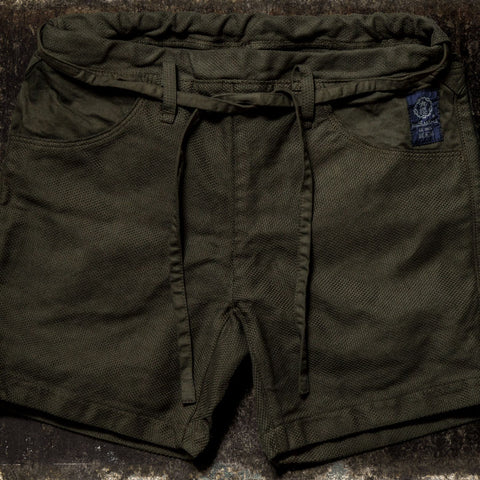
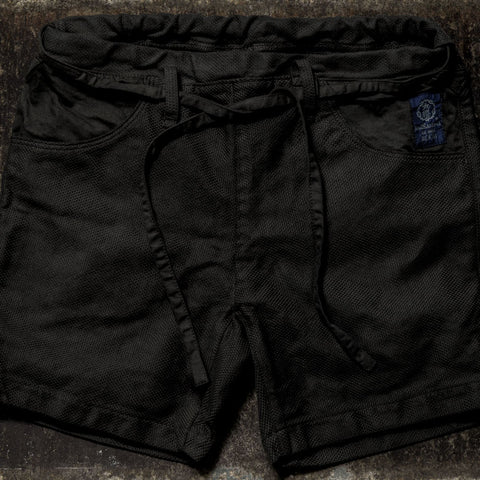
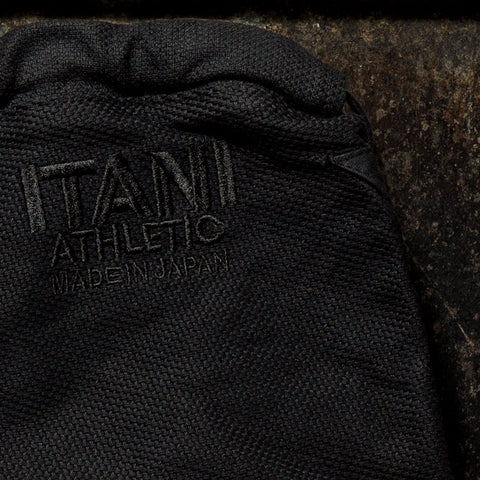

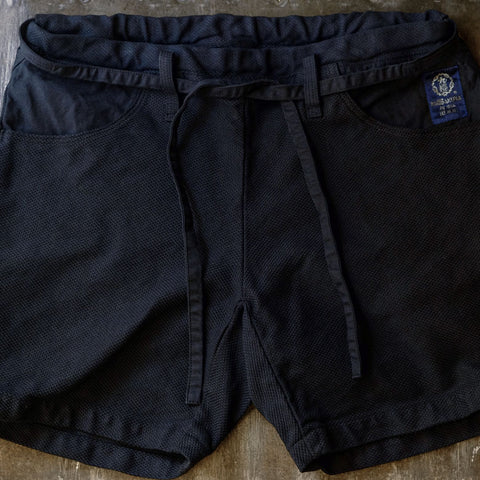
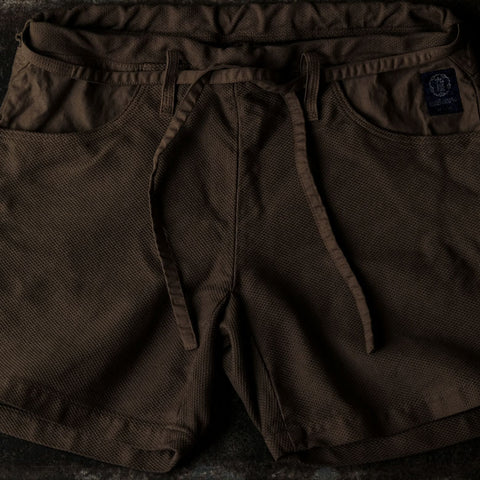
100% Cotton
Dark Khaki, Black, Brown, Navy
MADE IN JAPAN










100年以上もかけて少しづつ改良されてきた柔道衣。僕は中学生の頃から、柔道衣を着続けてきました。柔道衣を着ると、自然と背すじが伸びるような感じが好きです。また日々の稽古で着倒した達人のような襟の擦れた道着や黒帯の渋さに魅力を感じます。柔道衣は頑丈で使えば使うほど自分の肌に馴染み、タフさを持ち合わせたまま柔らかく馴染んでいく。カラダもそうだけど服や道具も強くてシンプルなものが最高だと考えていて、日本の武道から生まれた柔道衣はとても理にかなっています。頼もしい柔道衣を道場だけではなく、トレーニングする時や、山や海でキャンプする時に使いたいと思い、世界中の柔道家やオリンピック選手が愛用している老舗柔道衣メーカーである九櫻とコラボレーションして形になりました。
Judo-gi, the uniform worn by judo competitors, have been under careful development for over 100 years. I have been wearing judo-gi since I was in junior high school. I like the way my spine naturally straightens when I put one on. I am also drawn to the worn edges of the uniforms and the gravity of the black belts of masters who have dedicated long years of careful training to developing their art. Judo-gi are durable and suit your body better the more you wear them, retaining their strength while also changing to match you like a second skin.
As is true for the body, I consider strong and simple clothes and tools to be best. The uniform crafted for Japanese martial arts idealizes this view. This reliable judo-gi is suitable not just for the dojo, however. I wanted an equally reliable wear for training or camping in the mountains, so I collaborated with Kusakura maker of the judo-gi prized by judo competitors and Olympians all over the world to make it a reality.

創業100年を越える日本の武道具専門メーカーで柔道衣は糸を織るところから裁断、縫製なども自社の工場で職人らが行っています。
柔道衣生産を自社で完結しているのは、国際柔道連盟の認定業者では九櫻だけで、リオ五輪では28カ国の選手が着用し金3個を含む11個のメダルを獲得しています。九櫻という名は、約600年前の南北朝時代、楠木正成の家臣で大阪・河内地域に根城していた恩智左近の家紋に由来しているそうです。
Founded over a hundred years ago, Kusakura is a Japanese company that specializes in judo-gi. From the weaving of the material to the cutting and stitching, their gi are made in house by craftsmen. Kusakura is the only judo-gi workshop that is recognized by the International Judo Federation as making its product entirely in-house. In the Rio Olympics, competitors from 28 countries wore gi from Kusakura. These competitors claimed 11 total medals, three of which were gold. The name “Kusakura” is said to come from the family crest of a prominent samurai named Sakon Onji, a vassal of the military commander Masanari Kusunoki. Onji was based in the Osaka area some 600 years ago, during an era known as the Nanboku-cho Period.



judoka Representing: Brazil
| Olympic Games | |||
|---|---|---|---|
| 2004 | Bronze medal | Athens | -81kg |
| Pan American Games | |||
| 2003 | Gold medal | Santo Domingo | -81kg |
| 1999 | Silver medal | Winnipeg | -81kg |
| 1995 | Bronze medal | Mar del Plata | -78kg |
| South American Games | |||
| 2002 | Gold medal | Rio de Janeiro | -81kg |
| Pan American Judo Championships | |||
| 2010 | Gold medal | San Salvador | -81kg |
フラビオ・カント氏は2003年にリオデジャネイロのスラム街にレアソン校を設立。スラム街に住む学校に通うことの出来ない子供たちに、柔道と勉強を教えている。この学校は柔道を通して、鍛錬、謙虚さ、勇気、決断力を学ぶことに重きを置いている。そして子供達に“人生における黒帯を得ることを助けたい”という理念がある。それは、社会で必要とされる人になり、より良い市民になる、ということである。レアソン校からは、大学進学者やリオデジャネイロ五輪の柔道女子57kg級金メダリストのラファエラ・シルバ選手を輩出している。
In 2003 Flávio Canto created Institute Reação, a non-governmental organization that promotes human development and social inclusion through sports and education, promoting judo from the sport initiation to a level of high performance. Institute Reação works in low-income communities in Rio de Janeiro as Rocinha, Pequena Cruzada, Cidade de Deus and Tubiacanga. The Institute serves about a thousand children and young people between 4 and 25 years old and has played a prominent role in competitions, including having revealed the current Olympic and world junior judo champion Rafaela Silva Lopes.

 Dark Khaki(LEON別注)
Dark Khaki(LEON別注)

 Black
Black

 Brown
Brown

 Navy
Navy


| (cm) | S | M | L | |
|---|---|---|---|---|
| 1. | Waist | 75〜86 | 85〜94 | 95〜104 |
| 2. | Hip | 103 | 110 | 118 |
| 3. | Length | 42 | 44 | 45.5 |
| 4. | Hem-width | 27 | 28 | 31 |
| 5. | Inseam | 16 | 17 | 18 |